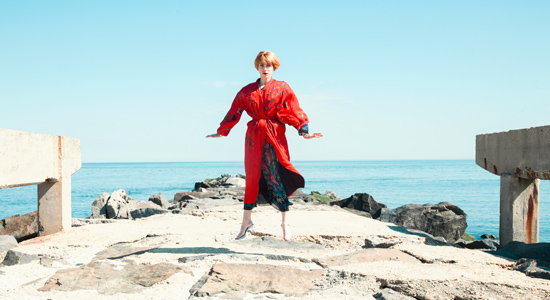
Ziemba’s music is doing the modern dance
Hope Is Never, the debut album from René Kladzyk (who performs as Ziemba), opens with “It Curls Itself,” a shimmering a cappella piece that describes the slow dance of a flower as it stretches out its leafy fingers to grasp the springtime sun. Her multitracked voice creates iridescent layers of harmony that echo in a vast, cathedral-like space.
“There’s something powerful and freeing about the vulnerability of vocal expression, especially a cappella vocals,” says Kladzyk. “It feels challenging to sing in a way that forces lyrical content into the clear, bright light, but that discomfort makes me feel rebellious and powerful.”
Kladzyk covers a lot of ground on the album, blending indie rock and dreamy synthesizer ballads, often graced by string and choral arrangements that could fit easily into the modern classical repertoire. Those elements come together on “Set Me As A Seal,” where Kladzyk’s aching vocal brushes against a dissonant string section and a rock-solid rhythm section.
“My vocals are first accompanied by a string quartet, then by a full band, with a host of synths dancing around the string players,” she says. “Toward the end of the song, the strings are making sounds that remind me of dolphins talking, and the synths are responding in gurgles and jabs. It sounds like two alien languages swirling around each other.”
When she’s not writing songs, Kladzyk composes for dance companies and her own multimedia presentations, fascinated by the ways different situations can shape the music.
“I don’t differentiate art from music, or my identity as an artist vs. musician,” she says. “I choose to create work that explores performance, sound and movement. Making music can ground the musician or the listener in their body, or produce feelings of ecstatic transcendence. I’m drawn to work that ties threads between mediums that are often understood as disconnected.”
—j. poet






